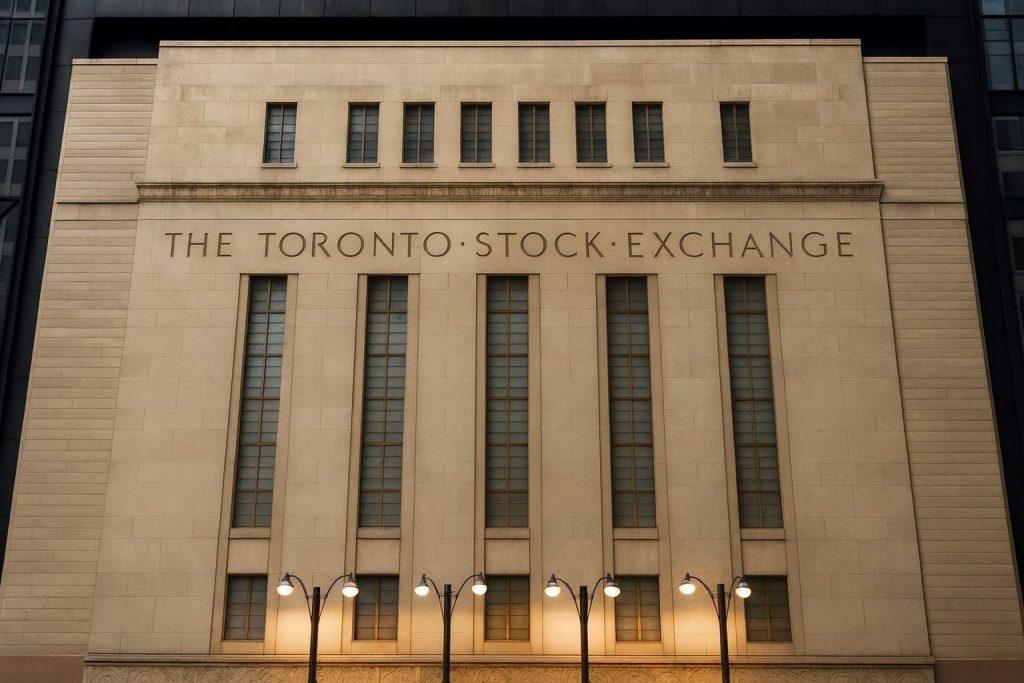The US stock market heads into Monday’s open after one of the most volatile weeks of 2025, with investors juggling shaky AI stocks, a brutal month for crypto, and growing uncertainty over whether the Federal Reserve will actually cut rates in December.
Major indexes staged a strong rebound on Friday, but still logged sizable weekly losses. The S&P 500 now sits roughly 4% below its late‑October record high, while the tech‑heavy Nasdaq is about 7% off its peak, according to Reuters. The S&P 500 alone gave up around 1.9% last week, underscoring the abrupt change in tone from the AI‑driven rally that dominated most of the year.
Monday, November 24, 2025, marks the first session of a shortened Thanksgiving week, with US markets closed on Thursday and closing early on Friday. The economic calendar is relatively light to start, but traders will be watching a fresh regional manufacturing survey, a key Fed speech, and a cluster of AI‑linked earnings after the closing bell.
All information below reflects what is known as of Sunday, November 23, 2025, and may change before the opening bell. This article is for information and education only and is not investment advice.
1. Where Wall Street Stands After a Wild Week
Major indexes: rebound, but not relief
- The S&P 500 and Nasdaq ended Friday higher — about 1% and 0.9% respectively — yet still finished the week in the red, pressured by renewed doubts about AI valuations and the Fed’s next move.
- From their late‑October records, the S&P 500 is down about 4% and the Nasdaq roughly 7%, Reuters reports.
- Volatility has spiked: the VIX “fear gauge” jumped into the mid‑20s, with one strategist noting it climbed to about 26 from below 20 a week earlier.
Friday’s surge was helped by remarks from New York Fed President John Williams, who said he could support another interest‑rate cut “in the near term,” pushing the implied probability of a December cut to around 70% at one point, according to the CME FedWatch tool cited by Investopedia.
Futures snapshot: By Friday’s close, US index futures were pointing higher into the weekend — Dow futures up about 1.2%, S&P 500 futures roughly 1.1%, and Nasdaq 100 futures about 0.9%, Business Insider data showed. Traders will check whether Sunday‑night trading confirms that positive tone or instead reflects renewed caution.
2. Fed Rate‑Cut Doubts and a Data Problem
From “done deal” to coin toss
For much of the autumn, markets treated a December rate cut as nearly guaranteed. That confidence has been shaken.
- Reuters notes that as of late Friday, market bets on a December cut were “barely higher than a coin flip,” as mixed data and Fed commentary muddied the outlook.
- Boston Fed President Susan Collins has repeatedly stressed that inflation remains “elevated” and that any further easing faces a “relatively high” bar, sounding hesitant about cutting rates again so soon.
The Federal Reserve’s next meeting is scheduled for December 9–10, and the path into it has been complicated by an unprecedented data gap.
No October jobs report — and delayed November data
Because of a 43‑day federal government shutdown from October 1 to November 12, the Bureau of Labor Statistics canceled the October jobs report entirely and pushed the November report to December 16 — after the Fed meets.
That means policymakers will go into their final 2025 meeting without a standard two‑month run of fresh labor data. Instead, they’ll rely on:
- A delayed September jobs report (released November 20), which showed stronger hiring but a higher unemployment rate.
- High‑frequency indicators like jobless claims and regional surveys.
Market commentary from Investopedia and others suggests that this lack of clarity is one reason volatility has jumped: without solid data, every Fed speech or second‑tier indicator can move expectations — and therefore markets — much more than usual.
3. Monday’s Economic Calendar: Light but Not Empty
There’s no top‑tier US data (like CPI, payrolls, or GDP) scheduled for Monday, but a few releases could still color sentiment early in the week.
Key US releases for Monday, November 24 (all times ET)
- 8:30 a.m. – Chicago Fed National Activity Index (October)
A composite index tracking 85 economic indicators. Monday’s release offers a broad — if somewhat lagging — snapshot of how growth evolved in October, according to the schedule compiled by Calculated Risk. - 10:30 a.m. – Dallas Fed Manufacturing Survey (November)
The Dallas Fed’s Texas Manufacturing Outlook Survey tracks output, orders and employment in the region’s factories.
The New York Fed’s economic calendar also flags this release at 10:30 a.m., highlighting its role as a timely read on industrial activity. - Treasury auctions
The North American economic calendar from BMO shows 13‑ and 26‑week T‑bill auctions and a 2‑year note auction slated for Monday. In a market hypersensitive to rate expectations, demand at these auctions can subtly influence yields and equity valuations, especially in rate‑sensitive sectors like tech and housing. - Fed speakers – Susan Collins
Several economic calendars (Trading Economics, FX platforms and CME’s Econoday listings) highlight another speech by Boston Fed President Susan Collins on Monday, reinforcing her central role in the current rate‑cut debate.
The heavier data hits Tuesday and Wednesday
The bulk of the week’s US macro news arrives after Monday:
- Tuesday, Nov. 25 brings a delayed September retail sales report, the Producer Price Index (PPI), home‑price gauges, Conference Board consumer confidence, and pending home sales, according to Investopedia’s weekly calendar and BMO’s November schedule.
- Wednesday, Nov. 26 features initial jobless claims, durable‑goods orders, the Chicago business barometer PMI, and the Fed’s Beige Book.
Some releases normally expected around this time — including the first estimate of Q3 GDP and the October PCE price index, the Fed’s preferred inflation gauge — are likely to be rescheduled thanks to the earlier government shutdown.
For Monday’s traders, that means macro surprises are unlikely before Tuesday, and price action could be dominated by technicals, flows, and the evolving Fed narrative.
4. Earnings to Watch on Monday (and Later This Week)
Even with a light macro slate, Monday night’s earnings could steer sentiment for AI, industrials, and testing equipment makers.
After Monday’s closing bell
According to company announcements, earnings calendars and sell‑side previews, these are the main names to watch on November 24:
- Agilent Technologies (A)
- The life‑sciences and diagnostics firm will report Q4 FY2025 results after the market close, followed by a 1:30 p.m. PT conference call.
- Analysts expect around $1.59 in EPS on roughly $1.8 billion in revenue, MarketBeat and Yahoo Finance estimate.
- Investors will focus on demand trends in biotech and pharma spending, which have been uneven through 2025.
- Zoom Communications (ZM)
- Zoom will release Q3 FY2026 results after the close, with an earnings webinar scheduled for 5:00 p.m. ET, the company’s investor relations site shows.
- Previous guidance called for about $1.21–$1.22 billion in revenue, just low‑single‑digit growth year‑on‑year.
- Earlier this year, Zoom beat expectations and raised its full‑year outlook thanks to strong uptake of AI‑powered collaboration tools. Monday’s report will show whether that AI tailwind is holding up in a tougher macro backdrop.
- Keysight Technologies (KEYS)
- The test‑and‑measurement specialist is also scheduled to post Q4 results on Monday, according to multiple earnings calendars and Investopedia’s week‑ahead piece.
- Keysight sits at the intersection of 5G, semiconductor, and defense spending — all critical for assessing the durability of the tech capex cycle.
- Symbotic (SYM)
- The AI‑enabled warehouse automation company plans to report Q4 and full‑year FY2025 results after the close, per its investor announcement.
- As a high‑beta AI and robotics play, Symbotic has an options‑implied move over 20% around earnings, according to Options AI’s calendar, underscoring how sensitive sentiment is in this corner of the market.
Other names on Monday’s docket include Blue Bird, Woodward, Semtech, Fluence Energy, Central Garden & Pet and Tuya, among others.
Big-picture earnings later this week
While Monday’s reports are important, the real volume of major earnings hits Tuesday and Wednesday, in a compressed schedule due to Thanksgiving:
- Tuesday, Nov. 25:
- Dell Technologies, HP, Analog Devices, Autodesk, Zscaler, NetApp, Workday, Alibaba, Best Buy and Nio are among the key names, per Investopedia and Kiplinger.
- These results will offer a broad read on PCs, data‑center hardware, cybersecurity, software spending and consumer electronics demand heading into the holidays.
- Wednesday, Nov. 26:
- Deere & Co. and Li Auto headline a shorter slate, with implications for agriculture, construction, and EV demand.
Because Thursday is a full market holiday and Friday is a short session with a 1 p.m. ET close, price reactions to mid‑week earnings may be amplified by lower liquidity.
5. AI Rally Under Pressure
The most important story behind last week’s selloff is the market’s reassessment of the AI trade.
- Reuters notes that the S&P 500’s rally since April — up roughly 38% from its early‑year low to late‑October high — was driven heavily by AI‑linked stocks.
- Now, many of those names are under pressure. Oracle, a high‑profile AI infrastructure play, has fallen more than 40% from its recent peak and is being cited as a “poster child” for AI‑related excess, according to an Investopedia analysis.
- Nvidia delivered blockbuster earnings but still saw its shares drop after results, while peers like Broadcom and AMD, along with AI‑exposed utilities such as Vistra and Constellation Energy, have also retreated.
A Reuters piece over the weekend warned that investors are bracing for a “volatile holiday season” as they question whether stretched AI valuations can hold without aggressive Fed easing. The Guardian likewise highlighted renewed “AI bubble” fears after Wall Street reversed a Nvidia‑driven rally.
A Forbes column summarised the backdrop as a mix of massive AI capital spending, Fed uncertainty, recession risks, and fading bullishness, all undermining the earlier optimism that AI alone could propel markets higher.
For Monday’s session, that context means:
- Any commentary on AI spending during Zoom, Symbotic, Dell, or Nvidia‑adjacent calls this week could move not just those stocks, but the broader market narrative.
- Investors may pay particular attention to whether management teams signal budget tightening, project delays, or a more disciplined approach to data‑center and AI infrastructure investments.
6. Crypto’s Crash and What It Signals for Risk Appetite
Crypto markets have had an even tougher November than equities — and that’s feeding into broader risk sentiment.
- Bitcoin has dropped roughly 25–30% this month, falling from an October peak above $120,000 to the low‑$80,000 range, Reuters and other outlets report.
- The slump has erased 2025 gains, triggered tens of billions of dollars in leveraged liquidations, and is on track for its worst month since the 2022 crypto collapse.
Analysts quoted by Reuters say the drop reflects a flight from risky assets, driven by worries over high tech valuations and the uncertain Fed path. Crypto‑linked stocks and ETFs have slumped alongside.
Historically, major Bitcoin drawdowns have sometimes coincided with broader equity stress. That doesn’t guarantee further stock losses — but it does underscore that risk appetite is fragile heading into Monday’s open.
7. Commodities, Yields and the Holiday Week Pattern
Friday’s market wrap from Investopedia highlighted some notable cross‑asset moves:
- The 10‑year Treasury yield slipped to around 4.06% from about 4.10%, as rate‑cut hopes briefly firmed after John Williams’ comments.
- WTI crude oil fell to roughly $58 per barrel, its lowest level in about a month, reflecting softer growth expectations and ongoing supply dynamics.
Lower yields and cheaper oil normally support equities, but this time they’ve been overshadowed by valuation worriesand the AI repricing.
Seasonally, December is historically one of the stronger months for stocks, with the S&P 500 averaging about a 1.3% gain since 1928, according to long‑term data cited by Reuters. And when November is weak — as looks likely this year — December has often been even better than average. But with the VIX elevated and confidence in AI names shaken, traders aren’t assuming a classic “Santa rally” just yet.
8. What to Watch Before the Bell on Monday
Here’s a quick checklist heading into the November 24, 2025 US stock market open:
- Overnight futures and global markets
- Do S&P 500, Dow and Nasdaq futures extend Friday’s rebound or fade? Friday’s close showed about 1% futures gains, but much can change before the bell.
- Watch Asian and European indices for confirmation of risk‑on or risk‑off mood.
- Fed commentary
- Any fresh headlines from Susan Collins or other Fed officials could swing December rate‑cut odds, which have see‑sawed between 40% and 70% in recent days.
- Morning data (second‑tier but important)
- Chicago Fed National Activity Index (8:30 a.m. ET) for a broad read on October growth.
- Dallas Fed Manufacturing Survey (10:30 a.m. ET) for a timely view of factory conditions in Texas.
- Treasury auctions
- Watch the 13‑ & 26‑week bill and 2‑year note auctions for signs of demand and any unexpected moves in the yield curve.
- Positioning ahead of after‑hours earnings
- Agilent (A), Zoom (ZM), Keysight (KEYS), Symbotic (SYM) and a slate of smaller names all report after the close.
- Options pricing implies sizable post‑earnings moves, especially in Symbotic, signaling that traders expect volatility in AI‑linked small and mid‑caps.
- AI and crypto sentiment
- Headlines about AI capex cuts, project delays, or more cautious guidance could hit growth stocks hard, given already stretched valuations.
- Bitcoin’s performance overnight will offer another barometer of risk appetite after a month of steep losses.
9. Bottom Line: A Quiet Calendar, a Loud Narrative
On paper, Monday’s US macro calendar is relatively quiet, with only regional indicators and Treasury auctions scheduled. But beneath the surface, the narrative is anything but calm:
- The AI trade — the engine of 2025’s equity rally — is being stress‑tested.
- The Fed’s December decision is no longer a foregone conclusion, made harder by a rare gap in employment data.
- Crypto’s slump and a spike in volatility show that investors’ appetite for risk is fragile.
- A compressed earnings and data week, plus thin holiday liquidity, could magnify market swings.
For traders and long‑term investors alike, Monday’s open is less about one headline or data point and more about how a nervous market digests a crowded mix of themes — AI, rates, earnings and risk appetite — as the year’s final stretch begins.
This article is for informational purposes only and does not constitute financial advice, investment recommendation, or an offer to buy or sell any securities. Always do your own research or consult a qualified financial professional before making investment decisions.







